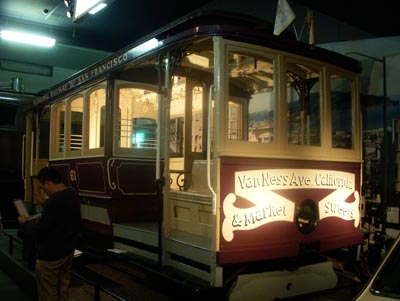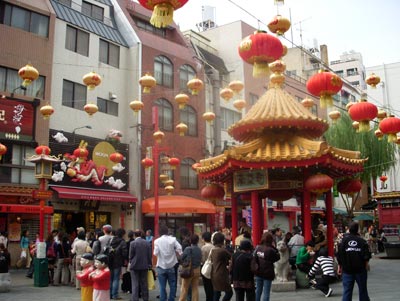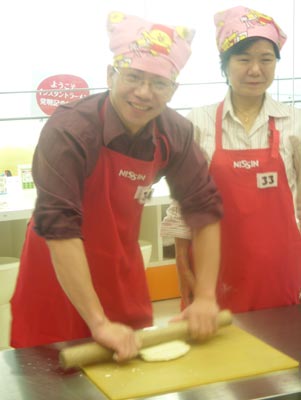Sister cities celebration in Japan's Osaka and Kobe
by Jay Brunhouse, Contributing Editor
The sister-city relationships of Osaka with San Francisco and Kobe with Seattle have resulted in providing student scholarships, arranging special events and programs, and promoting cultural exchange among young people. On the occasion of the 50th anniversary of these ties between Japan and America, I joined a group of journalists from California and Washington for a visit to Osaka and Kobe in November ’07.
Starting out
Leaving San Francisco aboard a nonstop United Airlines flight, we arrived 12 hours later at Kansai International Airport, 50 kilometers outside Osaka’s city center. A 29-minute ferry ride brought us to Kobe’s domestic airport, where we transferred to the New Otani Kobe Harborland (phone 078 360 1111, www.newotani.com.jp).
Harborland is a spick-and-span modern waterfront area in Kobe with everything from shops and restaurants to a movie complex and an amusement park. The New Otani is the only hotel in the complex. (Double rooms start at ¥27,300, or $260, for one person and ¥31,500, or $300, for two and single rooms start at ¥10,626, or $104.)
Kobe sights
Our Japanese hosts were very hospitable, and they kept us hopping on a busy itinerary. First up the next day, after a complete breakfast of Asian and Western staples, was a visit to the Akashi Kaikyo Bridge linking Kobe and Awaji Island.
The world’s longest suspension bridge, at 12,800 feet, it measures 974 feet from the sea’s surface to the top of its main tower. When lit at night, the graceful bridge looks like a string of pearls, but with a fillip: the lights change color depending on the time and season.
The Akashi Kaikyo Bridge is also unique because the Maiko Marine Promenade, constructed from the bridge girders below the roadway, has glass panes on the walkway that reveal astonishing views of the rippling gray waters 150 feet below. The panes proved to be popular viewing points but were avoided by those fearful of heights.
Next we visited Kobe’s Suma Aqualife Park, which also was celebrating its 50th anniversary. It contained a sea otter house with charismatic otters from sister-city Seattle. The park also included a wave tank, a sea turtle pool and the Dolphin Live Pavilion where spectators cheered the friendly mammals for their acrobatic tricks.
At noon we boarded a spacious ship named Concerto (www.kobe concerto.com) at Kobe Harborland’s pier for the nearly 2-hour lunch cruise back to the Akashi Kaikyo Bridge. Views of the Kobe skyline were dramatic.
Walking through Nankinmachi, Kobe’s colorful Chinatown, we went from one store to the next tasting everything from gourmet Chinese restaurant food to food from street stalls. Remarkably, Kobe’s Chinatown is the least-littered and neatest Chinatown I have seen.
Remembering the past
We left the hotel the following morning for a cheerful day, but it started with a sobering reminder of the headline-making Great Hanshin Earthquake.
On Jan. 17, 1995, at 5:46 a.m., an earthquake with a magnitude of 7.2 hit the Kobe area, taking thousands of lives in only a few seconds. Through the hard work of Kobe’s citizens, businesses and administration, the city recovered quickly. They erected monuments and hold commemorative activities to prevent the memories of the earthquake’s devastation from fading and to pass on the lessons learned during the disaster to future generations.
Thus we realized that much of what now stands in Kobe was built on the rubble and debris of the former city.
We visited a stretch of seaside where bent girders and fragmented building parts had been preserved and marked with a commemorative plaque.
In the modern Disaster Reduction & Human Renovation Institution buildings, we were stunned by dramatic big-screen images and sounds of the tremendous strength of earthquakes. We walked through realistic dioramas that reproduced devastated streets after the Great Earthquake, and we were impressed by documentary films showing towns and people in the recovery and reconstruction process after the quake. Finally, we visited the interesting disaster prevention workshop, illustrating new construction techniques used to minimize the damage of future disasters.
Sampling local flavors
We lunched at the restaurant Sakabayashi at Kobe Shu-Shin-Kan Breweries (phone 078 841 1121, www.shushinkan.co.jp), where we found not a drop of beer. The brewery is located in the Kobe-Nishinomiya coast district, referred to as Nada, Japan’s number-one sake-producing district.
Nada sake is called Otokozake (male sake) because of its strong characteristics, raw sensation on the tongue and coarse taste. The Kobe Shu-Shin-Kan Breweries feature a free sake tasting with snacks served.
Merrily, we rolled into the Momofuku Ando Instant Ramen Museum (Mr. Ando invented instant noodles in Kobe in 1958), which someone referred to as the “Cup of Noodles Museum.” At the “Handmade Chicken Ramen Hands-On Workshop,” we scrubbed our hands, donned pink head scarves and red aprons and proceeded to form one of several groups actually making chicken ramen. We mixed wheat flour, kneaded and stretched the dough, and extruded the noodles ready for steaming and drying. Yum yum!
After a stop at Kobe University, where the evening view down on Kobe was so beautiful that I realized why Kobe is known as the city with a “10-million-dollar” night view, we arrived in Arima Hot Springs for a truly Japanese experience.
One-thousand-year-old Arima Hot Springs is the oldest hot springs resort in Japan and one of Japan’s top three ancient springs. Arima has two kinds of springs: an iron-and-salt hot spring that is reddish gold, called kinsen, and a clear, radon-and-carbonate hot spring referred to as ginsen.
The night air was crisp, but the outdoor kinsen spring seemed to run straight from the heart of a volcano. It left a reddish residue on my body that was showered away inside the bathhouse beside the clear ginsen hot spring, which was scalding.
After dinner and having taken the waters, we all slept soundly on futons in rooms without telephones or television sets.
On to Osaka
After checking in at Hotel Nikko Osaka (phone 81 6 6244 1111, www.hno.co.jp), which is centrally located in the south section of the downtown area with major shopping opportunities and good dining nearby (room rates start at ¥19,000 or $188), we first visited Osaka Aquarium Kaiyukan (www.kaiyukan.com), the aquarium to end all aquariums.
We walked into a fantastic blue world through a transparent 31-foot-long tube surrounded by colorful fishes native to tropical and subtropical regions. An escalator took us from the third to the eighth floor, where we followed a spiral path descending to the exit, passing 14 meticulously kept aquariums of various sizes containing 60 species of fish (including the world’s biggest fish, the whale shark) and sea mammals from the five continents bordering the Pacific Ocean.
For lunch we went to the Osaka marketplace to try Osaka-style okonomiyaki, or Japanese pizza, a pan-fried batter containing shredded cabbage and topped with green onion, pork, octopus, squid, shrimp and cheese. It was very satisfying.
The Modern Transportation Museum was a great treat for me and great fun for everyone. Surprisingly, it contained a beautiful cable car that had been retired from San Francisco’s Van Ness Street when several of Osaka’s sister city’s cable car lines were closed.
We admired models of Maglev and 500-series 186-mph Shinkansen trains and a large, 1:80-scale model railway with a central traffic controller, not to mention locomotives and trains in the locomotive shed and rooms filled with transportation memorabilia of every sort.
National treasures
The symbol of Osaka, Osaka Castle, is the city’s major sightseeing attraction. The sheer height of the walls and the wide moats were a grand sight and can be matched by no other castle in Japan. The tower roof’s eight gilded dolphins and the ornamental tiles plus reliefs carved in the shape of gilded tigers were striking. The 164-foot-high observation deck offered a panoramic view of the park, the Osaka Plain and mountains in the distance.
When we passed through the entrance to the Shitennoji Buddhist Temple, the first state-established Buddhist temple in Japan, there was a plaque stating, “This is where the Buddha preached and this archway is the East Gate of Paradise.” The layout of the inner court of Shitennoji is the model for classic temple design.
Preserved here over the past 1,400 years are legendary swords, national treasures and Buddhist art.
Before our return flight from Kansai International Airport to San Francisco, we visited Sumiyoshi Grand Shrine, the headquarters of some 2,000 Sumiyoshi shrines in Japan. Founded in the third century, it will celebrate its 1,800th anniversary in 2011.
The shrine’s symbol, the picture-book Taiko-bashi Bridge, spans a pond leading to the four red, black and white architecturally distinctive buildings that provide a popular venue for festivals, dance performances and weddings.
Jay Brunhouse was a guest of the Japan National Tourist Organization (Los Angeles, CA; 213/623-1952… or New York, NY; 212/757-5640, www.japantravelinfo.com).




